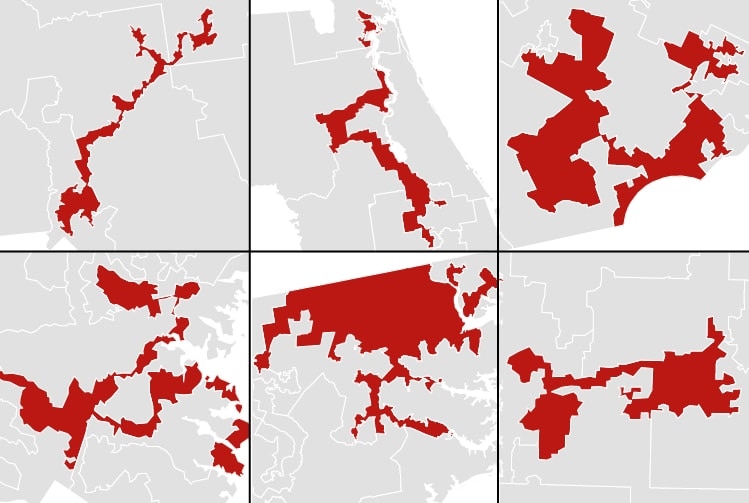Kerby Anderson
It’s election season, so we are hearing the word gerrymander once again. The term gerrymander comes from the early part of the 19th century. Eldridge Gerry, the governor of Massachusetts, supported legislation that redrew the districts of his party. One district looked like a salamander, so his opponents called it a Gerry-mander. The term stuck and is with us to this day.
Democrats have been in full gerrymander panic because they feared that many of the state legislatures, which are Republican controlled, would draw districts that would favor Republicans rather than Democrats. But the latest analysis by a left-leaning group concludes that Democrats may have more of an advantage in congressional seats. Data for Progress found that 212 House seats may be to the left of the country this year (that’s up from 203 in 2020).
The solution proposed in many states is to have “independent” redistricting commissions. Looking at the impact of these redrawn districts makes it hard to accept that they are truly independent. For example, the California commission could eliminate 3 of the 11 Republican seats in the House of Representatives. The New York commission could cut the number of Republican seats to 3 from 8.
Democrats like to point to Texas, which is gaining 2 seats due to the increase in the 2020 Census. Both new seats will likely go to Republicans due in part to the fact that both houses of the Texas legislature are controlled by Republicans. But just the opposite took place in legislatures in Illinois, Maryland, and Oregon, which are controlled by Democrats.
In an ideal world, perhaps computers should draw fair representative boundaries. But don’t believe all the rhetoric being tossed around about one party or the other carving out partisan boundaries. Both parties do it.
 Listen Online
Listen Online Watch Online
Watch Online Find a Station in Your Area
Find a Station in Your Area










 Listen Now
Listen Now Watch Online
Watch Online
